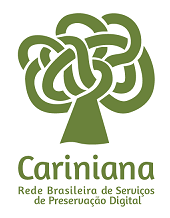A obscena senhora D: an narrative of dislocation
DOI:
https://doi.org/10.5433/1678-2054.2008v12p123Keywords:
Hilda Hilst, Canon, Abandonment, DislocationAbstract
The work present investigates the constitutives processes of the novel A obscena senhora D as builders of the experimental narrative whose critical valorization tenses the literary canon. The study probes to apprehend the work of radical and violent language as an exercice which presents similarities with Freud and Heidegger's concepts.Downloads
References
CUNHA, Helena Parente. "A mulher partida: a busca do verdadeiro rosto na miragem dos espelhos". Peggy Sharpe, org. Entre resistir e identificar-se: para uma teoria narrativa brasileira de autoria feminina. Florianópolis: Editora Mulheres; Goiânia: Ed. da UFG. 109-137.
FREUD. Sigmund. "O futuro de uma ilusão." Obras psicológicas completas. vol. 1. Rio de Janeiro: Imago, 1970. 13-71.
HEIDEGGER, Martin. Que é metafísica? Trad. Ernildo Stein. São Paulo: Livraria Duas Cidades, 1969.
HISLT, Hilda. A obscena senhora D. São Paulo: Globo, 2001.
MANTEGA, Guido. "Sexo e poder nas sociedades autoritárias: a face erótica da dominação". Sexo e poder. São Paulo: Brasiliense, 1979. 9-34.
QUEIROZ, Vera. Hilda Hilst: três leituras. Florianópolis: Editora Mulheres, 2000.
Downloads
Published
How to Cite
Issue
Section
License
Copyright (c) 2008 Terra Roxa e Outras Terras: Revista de Estudos Literários

This work is licensed under a Creative Commons Attribution 4.0 International License.
Authors who publish in this journal agree to the following terms:
a) The authors retain the copyright and grant the journal the right of first publication, the work being simultaneously licensed under the Creative Commons Attribution-NonCommercial 4.0 International License, allowing the sharing of the work with acknowledgment of the authorship of the work and initial publication in this journal.
b) Authors are authorized to assume additional contracts separately, for non-exclusive distribution of the version of the work published in this journal (eg, publish in an institutional repository or as a book chapter), with acknowledgment of authorship and initial publication in this journal.
c) Authors are allowed and encouraged to publish and distribute their work online (e.g. in institutional repositories or on their personal page) after the editorial process, as this can generate productive changes as well as increase impact and citation of the published work (See The Effect of Open Access).
d) The authors of the approved works authorize the journal to, after publication, transfer their content for reproduction in content indexers, virtual libraries and the like.
e) The authors assume that the texts submitted for publication are of their original creation, taking full responsibility for their content in case of any objection by third parties.



















